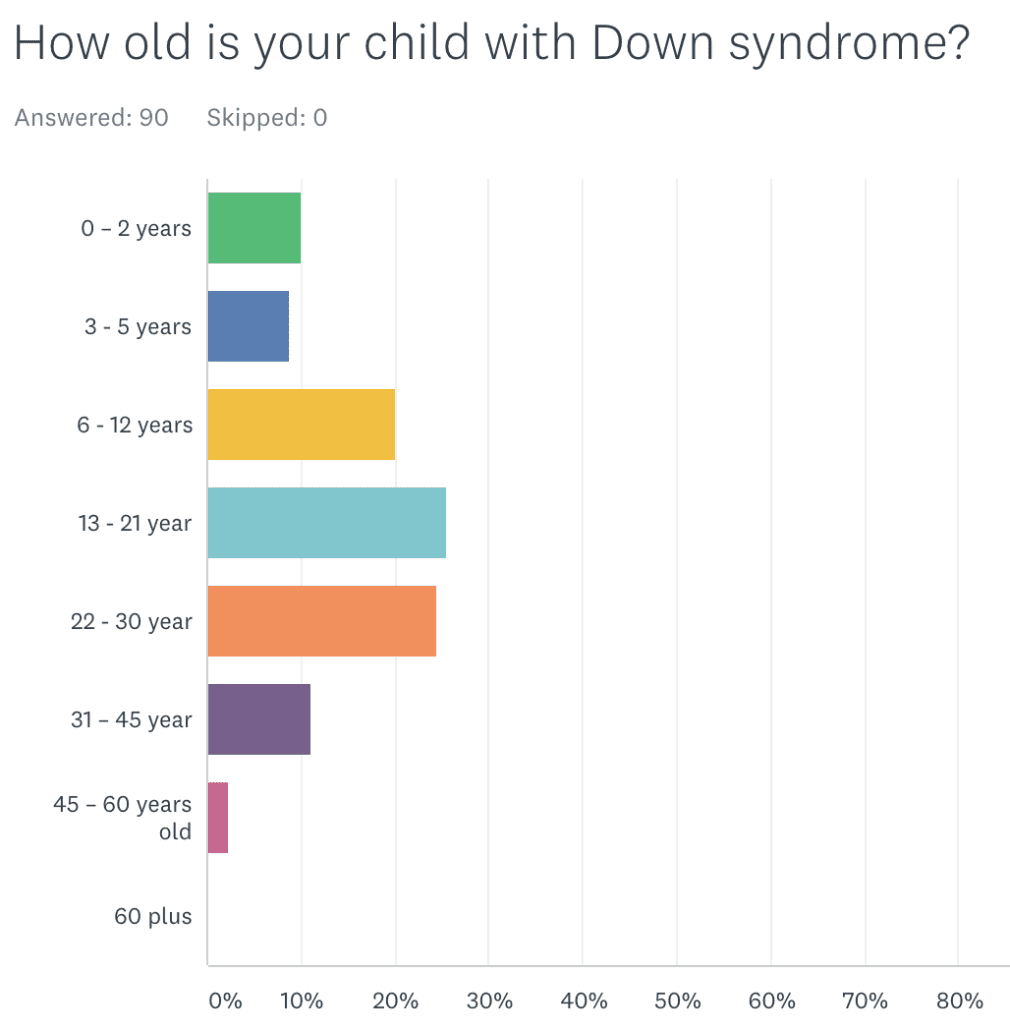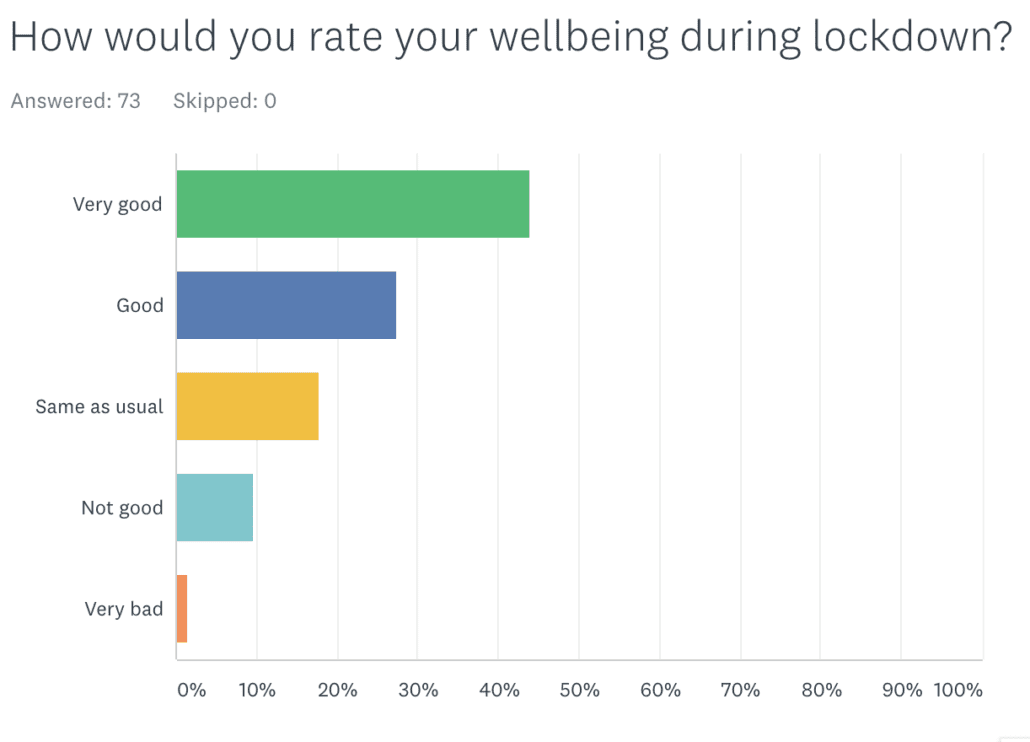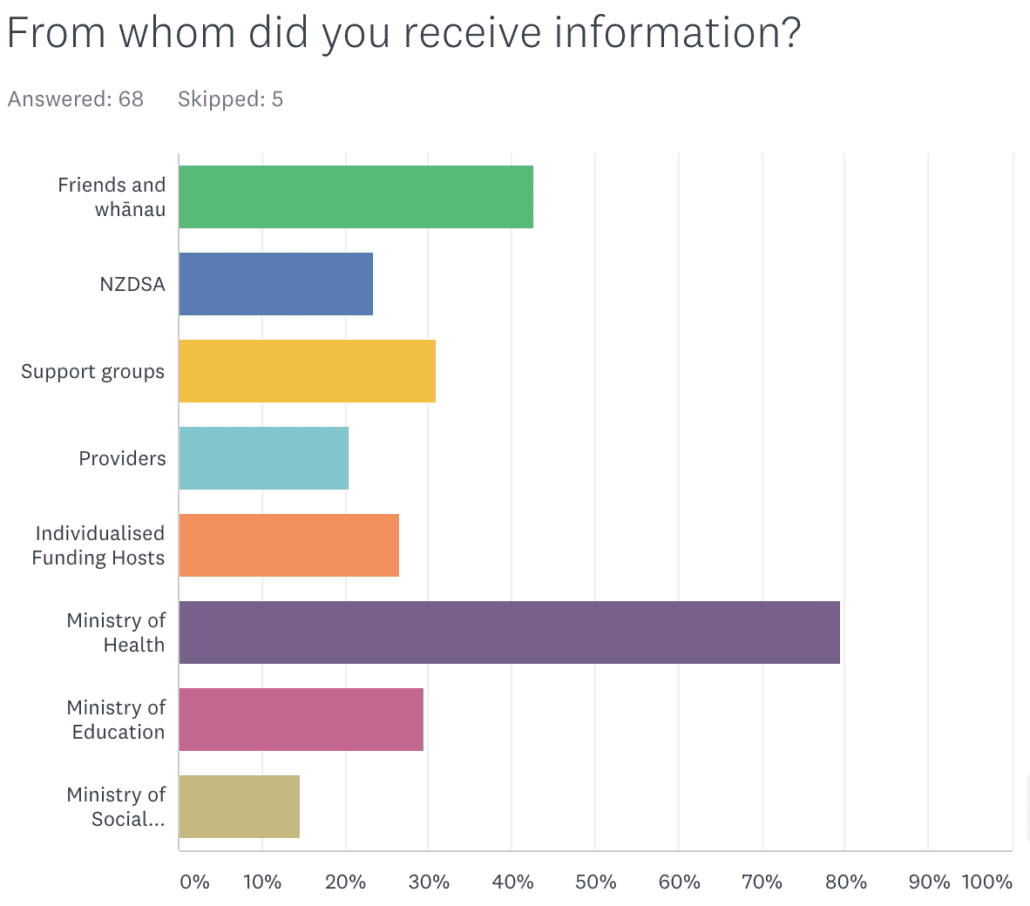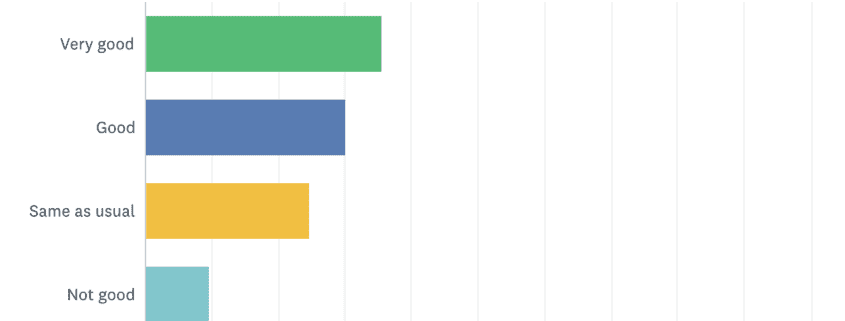Lockdown survey reveals fascinating statistics
The NZDSA recently conducted a survey to find out how people with Down syndrome experienced the COVID-19 lockdown period in April and May. We want to thank the 90 families who took the time to respond to one or all three surveys. Editor COEN LAMMERS has looked at the responses.
The first COVID-19 lockdown was a forced experience shared by all New Zealanders, but for every family those weeks had a different impact.
People with Down syndrome experienced the weeks without their usual routines differently than others, as they may not have always been able to fully understand the threat the virus was posing to our community.
For their families, the challenges were quite different and for many whānau, having to care for their families, including a child with special needs without the usual routines and support, was not always easy.
Most of us however know that our children, and our families, are a lot more resilient than many give them credit for, and the NZDSA survey proved just that.
One of the most positive statistics from the survey showed that 90% said that their wellbeing had been the same as usual or even better, while 10% did not feel so good and one parent had been feeling very badly during lockdown.
When asked about their child with Down syndrome, 90% of the respondents said that the well-being of the child had been the same as usual or better, with 10% feeling that their child’s wellbeing had been negatively affected by the lockdown.
A few parents reported that lockdown caused anxiety in their household about the global pandemic, about their jobs, and in cases when their child was particularly vulnerable to any virus.


The overwhelming majority of parents spoke about the quality time with their family and how they enjoyed life slowing down a bit, and to reconnect with other members in their household.
“If this is what retirement is like, bring it,” wrote one parent.
While most children coped really well, almost all respondents mentioned how much they missed their friends.
On the flipside, most children really enjoyed spending so much time with their parents and siblings, especially the older siblings who moved back home during lockdown.
The biggest challenges mentioned by parents were boredom and change of routine. Most of the children rely on their weekly routines, so many parents invested a lot of energy into creating new daily and weekly routines to give their children some new stability at home.
The universal love for electronics was a handy fall-back and many children enjoyed a lot more screen time during lockdown, but parents struggled to wean them off the devices.
Parents also reported that their children struggled with social distancing, so recreationally outings could be a challenge. This would be specifically tricky if they would bump into friends or neighbours and the children were not able to touch their friends.


For the parents, getting no breaks and no support, day after day, was exhausting and a quarter reported to feel lonely during lockdown.
“He was glad lockdown was over because he was sick of me being the teacher,” said another parent.
Many of the respondents shared their frustration of not being able to fully explain the nature of the pandemic and why they had to stay at home.
Some young people were particularly affected by not being able to see their friends or family during lockdown and were confused what was going on.
“He couldn’t see his grandparents for so long that he thought they had died!” wrote one parent.
Most parents managed to help their child comprehend the situation by talking about bugs and the importance of washing your hands, which seemed to make sense to most children.
Only a small number of respondents had to deal with behavioural issues triggered by lockdown, including some anxiety and aggression, but in some cases that settled down as the new reality set in.
Some parents reported that their child had some toileting accidents, while others mentioned that sharp increase of screen time caused some “cold turkey” aggressive reactions when parents started to reduce the screen time.
One parent reported that their child decided she “was never going back to school”, but that the teachers made the return so exciting that she was keen to return.
From the families who responded, the percentage of people with Down syndrome in the home included 19% pre-schoolers, 20% primary school age, 26% high-school age and 35% between 21-45 years old. Only 2% were over the age of 45.
Of those children, 93% lived at home with family while only 2% were in supported living, 1% living independently and 3% in residential care.
Some of the parents who were separated from their child during lockdown reported that it was “heart-breaking” not to be able to visit their loved one, but others reported that virtual meetings really helped to ease the separation anxiety.


Services and information
Obviously, lockdown hugely impacted on the normal services that were able to be provided and 75% of parents reported that their family was impacted, with 55% getting little or no service at all.
Even though parents had to cope without their usual services, there was a universal understanding that the pandemic was an extraordinary situation, so the number of parents unsatisfied with their services only increased slightly.
Many parents were disappointed that they were not contacted more often, or at all by their usual service providers, including more interaction with teacher aides, speech therapists and OTs through Zoom calls.
Most caregivers however were very relaxed about being left to their own devices and understood that any physical interaction would create health risks.
From the 90 respondents only one was unable to access essential services or groceries and 11% said they could only get limited supplies.
Most people, 65% got their groceries at the supermarket, 31% shopped online while 15% used the priority shopping option.
As far as access to PPE was concerned, 27% said they could not get access, while 45% did not need to.
Of the 27% who did have access, the vast majority (68%) purchased it themselves, 7% received them from their service providers while 24% got them through their IF Host.
When asked about information about COVID-19, 85% was happy with the level of information they received while 15% would have liked to have seen more.
The Ministry of Health was the main source of information (79%) while others relied on information through their family networks (43%). The NZDSA (24%), the Ministry of Education (29%) and MSD (15%) were also mentioned as good sources, as well as support groups (31%), providers (21%) and funding agencies (27%).
Being stuck at home, it was no surprise that social media and websites were used by 70% of families to find key information.
Families also received direct information through emails and newsletters (20%) or by talking to family and friends (31%).
Education
The survey revealed that 52% of the parents provided some home schooling for their child with Down syndrome.
Of the remaining parents, 18% had not done any home schooling, while for 30% home schooling was not relevant.
Of those parents trying to continue their child’s schooling from home, about a third found it difficult or stressful while two thirds said they managed without too much stress.
Among this group, around 20% felt that the schools had not provided them with appropriate material or support to learn from home. About half of the children who lived away from their family came back to the family home for lockdown.
While many parents had no concerns going back to school, more than half of the respondents were and are still extremely concerned about how exposed their children would be at school.
Many questioned their schools’ social distancing and hygiene policies, especially in learning units and whether their child would be able to adhere to those rules.
One strong sentiment coming through the responses was universal confusion among parents whether their child with Down syndrome did or did not fall into the high-risk category under Level 2 or 3.
As a results several parents kept their children at home for weeks, even when all schools were back to their normal routines.
“She hugs people so we decided to keep her home,” wrote one parent, while another parent kept their child at home for eight more days due to medical concerns.
“We were extremely anxious and still are.”
New opportunities
One of the most interesting revelations of the survey was that our families and support services discovered that the digital age is offering wonderful new opportunities to connect.
Parents enjoyed that they were able to talk to their GP, speech therapist or teacher through their laptop and one wrote that “We will continue to do speech therapy through Zoom.”
Another parent reported that they will continue with online learning when their child is sick at home in the future.
With a higher demand for digital services, a lack of access to good internet or appropriate digital devices proved to be a huge source of frustration in some households.



